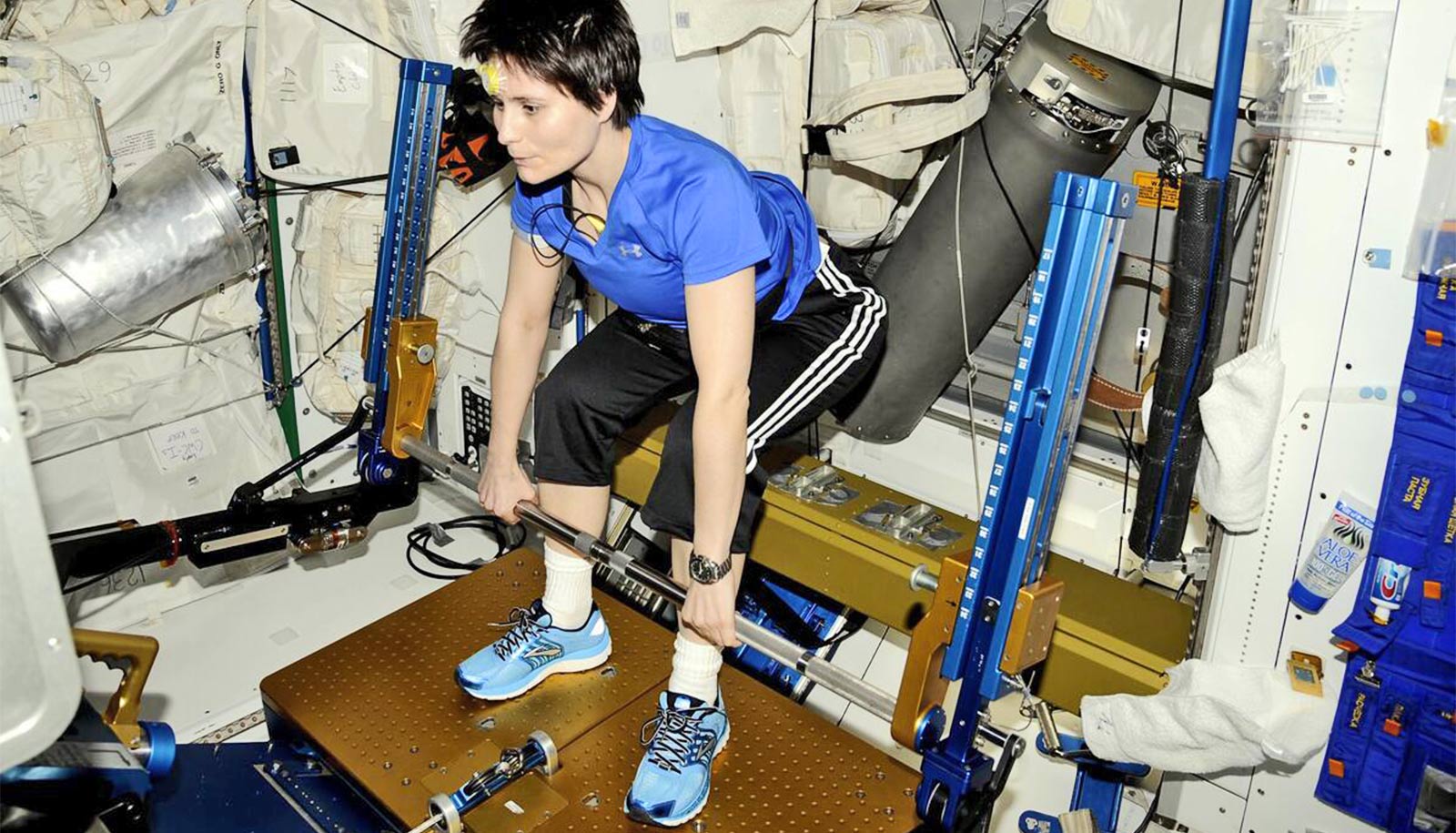Approximately 750 million light years from Earth lies a gigantic, bulging galaxy with two supermassive black holes at its center. These are among the largest black holes ever found, with a combined mass 15 billion times that of the sun.
Long-term observations suggest one of the black holes appears to orbit the other—the first duo ever shown to be moving in relation to each other. It is also, potentially, the smallest ever recorded movement of an object across the sky—known as angular motion.
“If you imagine a snail on the recently discovered Earth-like planet orbiting Proxima Centauri—a bit over four light years away—moving at one centimeter a second, that’s the angular motion we’re resolving here,” says Roger W. Romani, professor of physics at Stanford University and coauthor of the paper published in Astrophysical Journal.
The technical achievements of this measurement alone are reason for celebration. But the researchers also hope they’ll gain insight into how black holes merge, how the mergers affect the evolution of the galaxies around them, and ways to find other binary black-hole systems.
Over the past 12 years, scientists, led by Greg Taylor, a professor of physics and astronomy at the University of New Mexico, have taken snapshots of the galaxy containing the black holes—called radio galaxy 0402+379—with a system of 10 radio telescopes that stretch from the US Virgin Islands to Hawaii and New Mexico to Alaska.
Black holes kill more stars than astronomers expected
The galaxy was officially discovered back in 1995 and in 2006, scientists confirmed it as a supermassive black-hole binary system with an unusual configuration.
One of the black holes moved at an angle about 1 billion times smaller than the smallest thing visible with the naked eye.
“The black holes are at a separation of about seven parsecs, which is the closest together that two supermassive black holes have ever been seen before,” says graduate student and lead author Karishma Bansal.
The paper reports that one of the black holes moved at a rate of just over one micro-arcsecond per year, an angle about 1 billion times smaller than the smallest thing visible with the naked eye. Based on this movement, the researchers hypothesize that one black hole may be orbiting around the other over a period of 30,000 years.
Although directly measuring the black hole’s orbital motion may be a first, this is not the only supermassive black-hole binary ever found. Still, researchers believe that 0402+379 likely has a special history.
“We’ve argued it’s a fossil cluster,” Romani says. “It’s as though several galaxies coalesced to become one giant elliptical galaxy with an enormous halo of X-rays around it.”
Deepest X-ray image ever is chock-full of black holes
Researchers believe that large galaxies often have large black holes at their centers and, if large galaxies combine, their black holes eventually follow suit. It’s possible that the apparent orbit of the black hole in 0402+379 is an intermediary stage in this process.
“For a long time, we’ve been looking into space to try and find a pair of these supermassive black holes orbiting as a result of two galaxies merging,” Taylor says. “Even though we’ve theorized that this should be happening, nobody had ever seen it, until now.”
A combination of the two black holes in 0402+379 would create a burst of gravitational radiation, like the famous bursts recently discovered by the Laser Interferometer Gravitational-Wave Observatory, but scaled up by a factor of a billion. It would be the most powerful gravitational burst in the universe, Romani says.
The theorized convergence between the black holes of 0402+379, however, may never occur. Given how slowly the pair is orbiting, the scientists think the black holes are too far apart to come together within the estimated remaining age of the universe, unless there is an added source of friction. By studying what makes this stalled pair unique, the scientists say they may better understand the conditions under which black holes normally merge.
Romani hopes the work is just the beginning of heightening interest in unusual black-hole systems.
“My personal hope is that this discovery inspires people to go out and find other systems that are even closer together and, hence, maybe do their motion on a more human timescale. I would sure be happy if we could find a system that completed orbit within a few decades so you could really see the details of the black holes’ trajectories.”
Other researchers from the University of New Mexico, the National Radio Observatory, and the United States Naval Observatory are coauthors. NASA and the National Radio Astronomical Observatory funded the work.
Source: Stanford University



